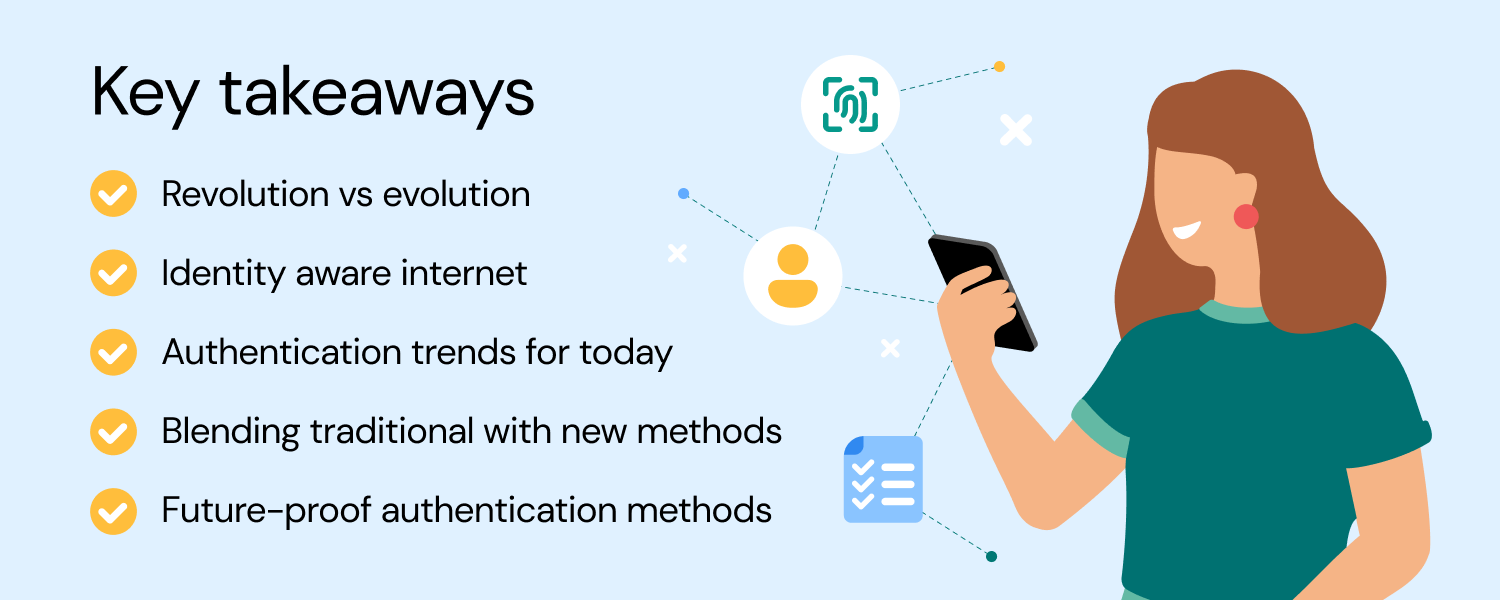Insights
5 key takeaways on digital identity and authentication

Insights

As the digital world evolves, securing trustworthy interactions is more critical than ever for an enterprise. In fact, McKinsey reports that consumers value digital trust as much as purchase decision factors like cost and delivery time. With cyber threats evolving and users wanting better control over their data, businesses must enhance their identity and authentication systems.
Lee Suker, Head of Number Intelligence and Authentication at Sinch, recently took the stage at the Communications Fraud Control Association (CFCA) Summer Educational 2024 event in London to discuss “Strong Customer Authentication: Revolution or Evolution?” His insights illuminated the latest trends and future directions in digital identity and authentication, and shed light on how businesses can stay ahead of emerging threats while maintaining user trust.
This article captures the key takeaways from Lee’s presentation to help businesses navigate the complexities of securing digital identities while enhancing user experience.
Lee’s presentation highlighted the need for businesses to improve their current systems to meet new security needs without causing major disruptions. He called this balanced approach an “evolution,” meant to boost security measures while also reducing the cost of ownership. In contrast, “revolution” means adopting entirely new systems or technologies that transform user authentication. By understanding and using both revolution and evolution, businesses can better manage the complexities of digital identity.
“Enterprises focusing on securing their end-user experience is a must, proof of possession of an end-user’s mobile phone is evolving and still represents an excellent choice that is easy to use and ubiquitous.”
– Lee Suker, Head of Number Intelligence and Authentication at Sinch
Why is this important? Evolving telecommunications systems help businesses to integrate new security features smoothly, without alienating users or causing huge expenses. This means having a secure transition and reliable user experience while new methods are adopted.
Lee described how we’re shifting away from the ‘Wild West’ of data brokerage from 5-10 years ago to a safer, user-friendly approach. In this future, users will have greater control over their data, and secure sharing and identity verification will be standard practices.
Why is this important? Users having control over their own data enhances privacy and security, which in turn reduces the risk of data breaches and misuse. It builds trust between users and businesses, leading to increased user confidence and engagement. Though we aren’t in this world yet, governments in the EU and North America are encouraging faster adoption through Mobile Driver’s License (mDL), electronic IDentification, Authentication, and trust Services 2 (EIDAS2) as a few examples.
Lee’s presentation covered authentication trends and changes in traditional multi-factor authentication (MFA) methods. He pointed out that traditional MFA methods are on the decline as businesses adopt stronger security measures like Strong Customer Authentication (SCA). Digital disruption is driving sectors like banking and e-commerce to adopt more advanced security technologies.
Why is this important? There’s a growing demand for secure and user-friendly authentication solutions. Advanced security measures are now improving user experience, security, and cost. Staying ahead of evolving cyber threats and protecting sensitive information will remain crucial. This trend will likely continue as businesses enhance security protocols while keeping things convenient and efficient for users.
Looking ahead, there will likely be a focus on integrating more sophisticated technologies, such as biometric authentication and AI-driven security systems, to further strengthen defenses against cyber threats.
Lee’s presentation offered an interesting perspective on how older verification methods are blending with new technologies. While simpler traditional methods still dominate, there’s a clear shift towards newer, more secure options. This dual approach helps businesses balance continuity and security, especially in using customers’ telephone numbers for identification. Notably, we’re seeing a rise in adoption of more advanced, yet familiar solutions like Flash Call and Data Verification, which move the needle on cost and security.
“Securing enterprise end-users always requires a balance of friction and security, but it is also a balance of cost, especially for large user bases and highly digitized services. Innovations like Flash Call can really move the needle on user experience and cost.”
– Lee Suker, Head of Number Intelligence and Authentication at Sinch
Why is this important? Blending traditional and new verification methods can help an enterprise provide a seamless user experience while also enhancing security. Even if new methods are more secure or easier to use, there’s a process involved with adoption and roll-out that needs to be coordinated before it can be effective. Keeping traditional methods available ensures a baseline of security while new methods are phased in.
For enterprises looking to streamline authentication and reduce costs without compromising on security, finding a future-proof verification solution will offer your operations a significant advantage.
And Sinch does just that. We offer a comprehensive suite of authentication methods through a single integration point, like the market-leading Flash Call Verification solution. This enables businesses to achieve cost savings of up to 50% compared to SMS OTP, while providing faster and more efficient user verification.
“Telephone numbers remain an important personal identifier in our digital lives. The telecommunications ecosystem needs to work together to ensure that it remains a trusted attribute and affordable for enterprises to utilize.”
– Lee Suker, Head of Number Intelligence and Authentication at Sinch
Why is this important? Using future-proof verification solutions helps businesses scale and adapt to new technologies without sacrificing security or user experience. It gives a competitive edge by making operations smoother and reducing costs.

Lee’s presentation at the CFCA event highlighted key trends in digital identity and authentication, stressing the need to balance user convenience, security, and cost-effectiveness. Businesses face the challenge of evolving digital identity practices, adapting to increased internet identity awareness, and managing the decline of traditional MFA methods while embracing new verification technologies.
It is a super exciting time for authentication and identity, especially for enterprises with very large audiences. Sinch can help you navigate this by offering the best that traditional approaches have to offer – helping you move the needle on cost and security – paving the way to help you realize a new era in digital identity and authentication.
Ready to integrate Sinch’s verification solutions? Get in touch. Our team is excited to help you take your security and user authentication to the next level!